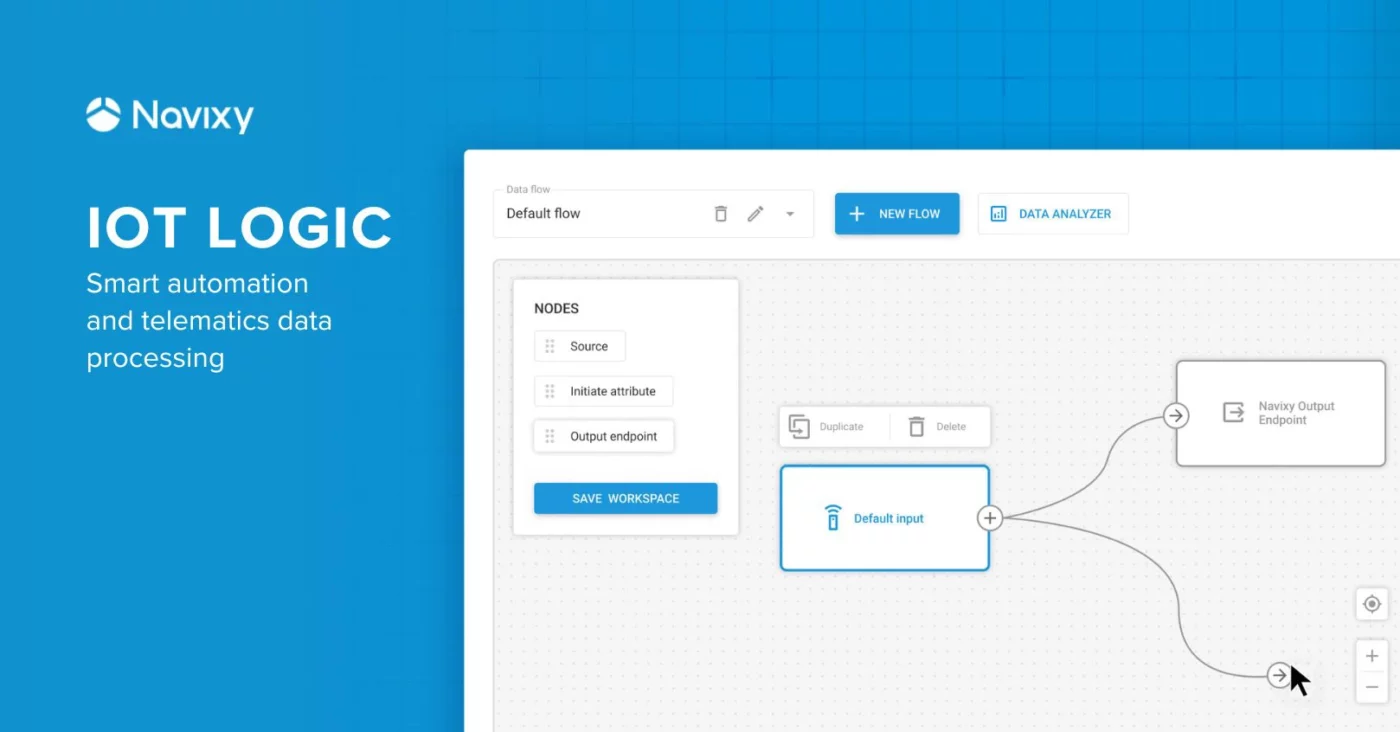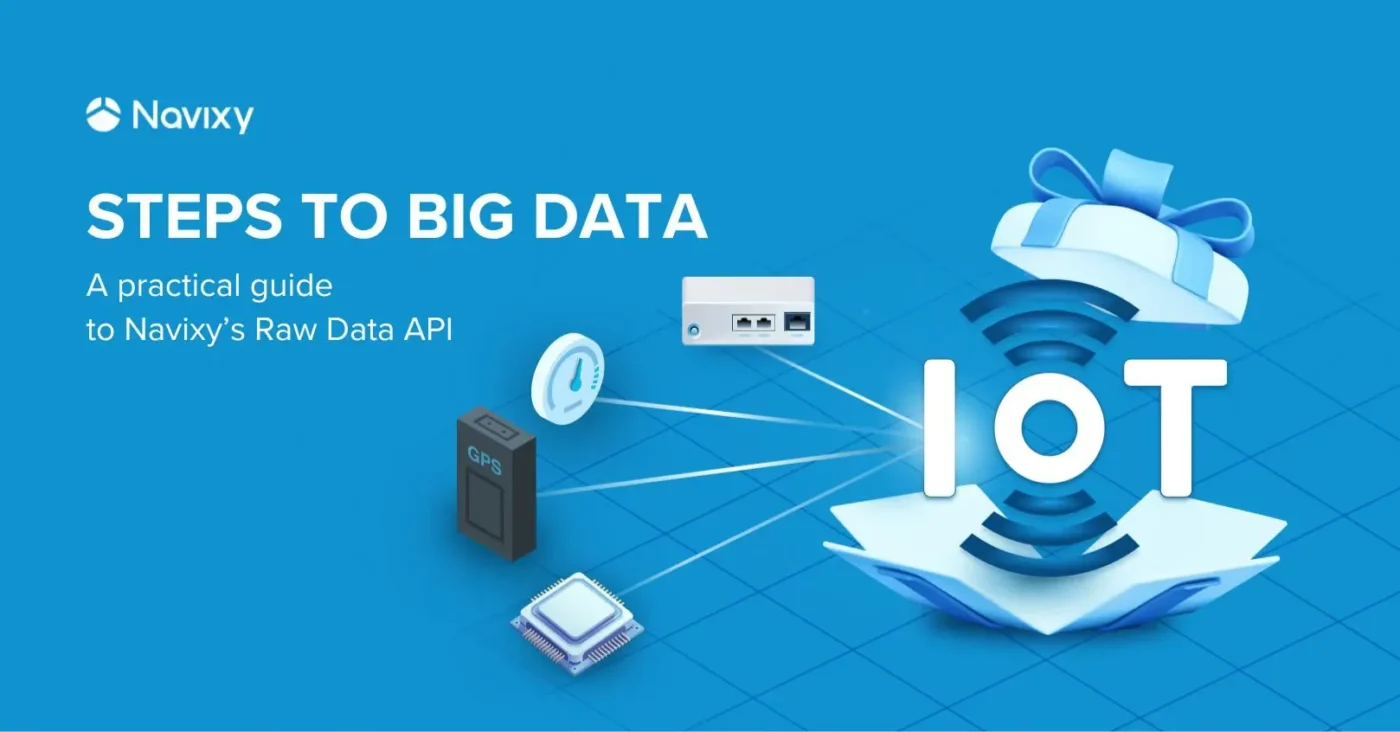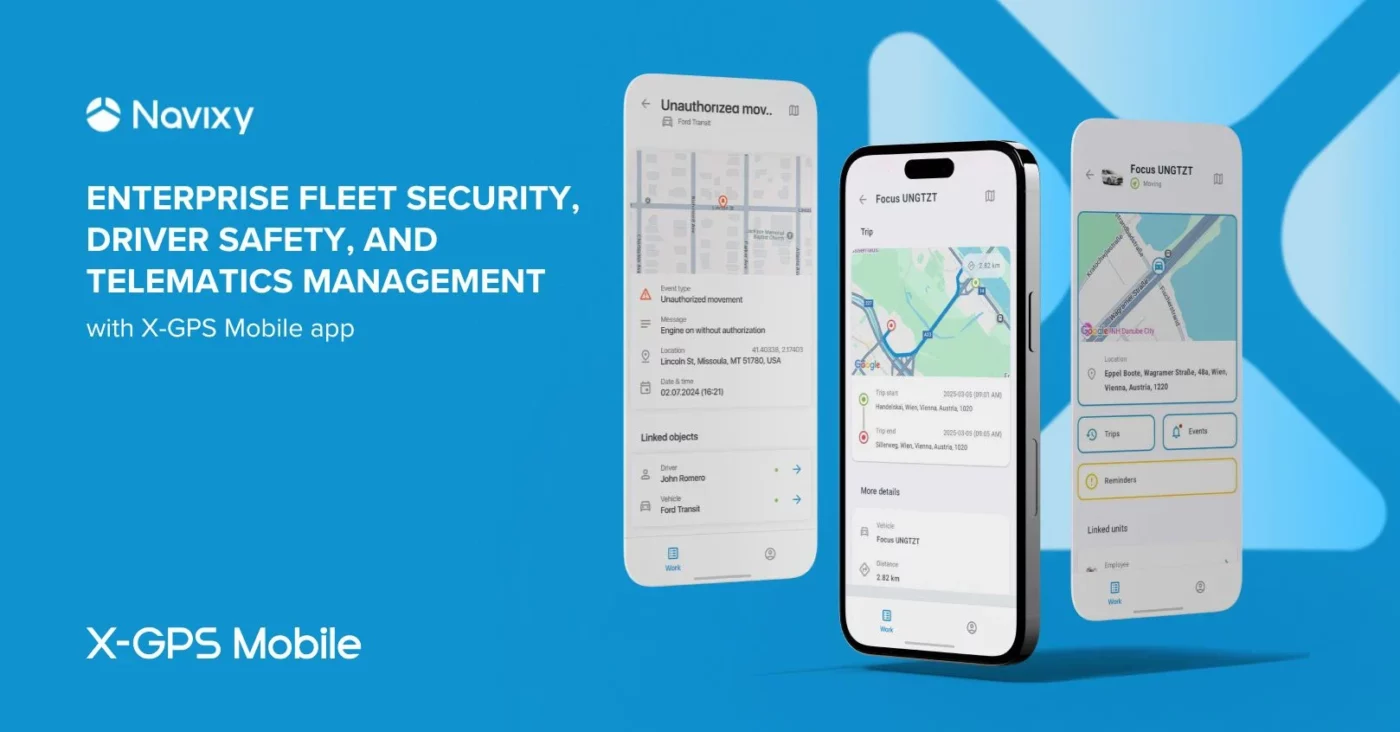In one of our previous post we have already discussed, why and how MDVR could benefit fleet management software and showed examples of MDVR implementation by different telematics platforms. Progress in MDVR field is driven by technological advances of cameras on one hand, and on software development on the other.
Modern MDVR is able to monitor various driver’s head movements and face reactions, enabling to determine how concentrated the driver is on his/her work, if he is tired, drunk or needs some rest, how easily he could be frustrated, how happy and comfortable he is while doing his work, how much time he spends on phone calls and if he is wearing a seatbelt or not etc. It now can even identify a driver, approaching to the car, unlock the car, deactivate security, or lock the doors in case a drunk driver is approaching the vehicle.
Introduction and state of the art
All these features are making MDVR-based solutions highly applicable in fleet management: such systems allow to continuously scan driver for signs of fatigue, distracted driving and abnormal behavior. According to ROSPA (The Royal Society for the Prevention of Accidents, UK), driver fatigue may be a contributory factor in up to 20% of road accidents, and up to one quarter of fatal and serious accidents. Taking this into account, MDVR would for sure be a solution, helping fleet owners to manage the fatigue-associated risks.

According to Fortune Business Insights, the global fleet management software market valued at $14,047.6 million in 2018, is expected to reach $46,584.7 million by the end of 2026. These statistics could serve as a good example of continuously increasing interest to fleet management software and attention to the challenges it may address.
A key technology that makes the above mentioned features possible is Face Recognition. It is quite an easy task for a human brain to recognize a person one knows, but not as easy for a computer… It is important to mention, that terms Facial Recognition and Facial Detection determine different processes. Facial detection employs algorithms utilizing front of the human face and picking up certain face features like, for example, eyebrows and irises to verify human face and distinguish it from other objects.
Facial Recognition is a more complex routine, since it allows to differentiate between two people. In this scenario a person should be enrolled in a system, where one or a few photographs of an individual taken at different angles are used, enabling the system to build up a virtual image for further identification. Facial Recognition therefore utilizes more complex algorithms, enabling more human face features to be detected and analyzed. In order to obtain so-called faceprint, ~80 or more distances between certain unique points on a face should be carefully identified. Infrared cameras allow to further increase Face Recognition efficiency at night or when passing through the dark tunnel.
Face Recognition, MDVR, and current market state
MDVR market is expanding fast and the number of manufacturers is growing rapidly. Being a key MDVR feature, Face Recognition also became a widespread technology over the last years.
According to US National Institute of Standards and Technology (NIST), advances in accuracy and overall efficiency of Face Recognition are driven by recent developments in convolutional neural networks (CNN), machine learning tools and entailed algorithms, tolerant to poor-quality images. NIST performed a Facial Recognition Vendor Tests, evaluating 127 software algorithms from 39 different developers. The performed tests demonstrating that between 2014 and 2018, facial recognition software got 20 times better at searching a database to find a matching photograph.
According to Markets and Markets, the global facial recognition market size is expected to grow from $3.2 billion in 2019 to $7.0 billion by 2024, at a Compound Annual Growth Rate (CAGR) of 16.6% during 2019–2024. Major growth drivers for the market include increasing users and data security initiatives by government, growing usage of mobile devices, and increasing demand for robust fraud detection and prevention systems.
Undertaken research and obtained statistics emphasize a vital role of convolutional neural networks and Face Recognition applications, combined with high interest and attention to the associated technology. Some principles behind artificial neural networks and CNNs will be covered in one of our follow-up post.
How it works on practice
Facial recognition performs capturing and analysis with further comparison of specific face patterns based on the facial details of a particular person, and contains three steps:
1) detection process detects and locates human face on image or videos;
2) relying to the face features, capture process does analog to digital conversion, transforming actual face to digital information;
3) matching process checking if two faces belong to same human;
There are several ways of Face Recognition including MDVR implementation by different telematics platforms, currently available on the market. To provide some examples, here we briefly consider solutions provided by Howen Technologies and Exeros Technologies.
Howen Technologies product is equipped with Forward Collision Warning (FCW) and driver monitoring, greatly reducing accidents and saving lives. When the ADAS camera detects a potential risk, such as a collision with or following too close to the vehicle in front, or lane deviation, the system will voice-alert the driver to take actions.

The Driver Monitoring System (DMS) camera will identify the driver’s abnormal behaviors, such as fatigue driving, distracted driving, smoking, making telephone calls, drinking water, and not wearing a seat belt. It will also verify the driver’s identity via the face recognition algorithm. When an ADAS or DMS warning is triggered, HOWEN DMS+ADAS SYS directly uploads the pictures or videos of the risky moments to the cloud via the system’s 4G network. DMS ADAS system connects to MDVR via RS232, and MDVR will send the trigger alert to a GPS tracking platform. Lowering the traffic accidents rate, the company is able to deeply analyze the driver’s driving behavior based on the warning data collected, improving the fleet’s operation efficiency, lowering insurance company’s claim rate, and taking away some of the concerns of the government departments.
Exeros Technologies can offer two systems, a standalone unit, which will warn the driver locally and the system which is integrated with DVR systems.


The integrated units provide data which can be shown as alerts/alarms on the telematics portal, along with GPS and vehicle OBD sensor info, it all can be monitored as user may wish. AI Facial Recognition can be fully integrated with Advanced Driver Assistance System (ADAS). Both systems combined deliver a complete safety suite of AI-driven technology to fleet vehicles and drivers – both inside and out. According to Exeros Technologies, common requests are to monitor and report falling asleep or poor driver behavior.
Face Recognition AI is a vital component of MDVR, that makes it possible to determine various driver’s head movements and face reactions, enabling a wide range of applications. MDVR provides highly beneficial features to the telematics platforms: fleet owners can make efficient informed decisions with the insight on the reason of violations and accidents, committed by their drivers and could provide solid evidence for every disputable case. Most of the nowadays top-performing Face Recognition algorithms are rooted on the convolutional neural networks.
Acknowledgements
We acknowledge Howen Technologies and Exeros Technologies for fruitful discussions, open-minded approach, and sharing some information on their solutions, alongside with their passion towards innovations and progress in telematics.


